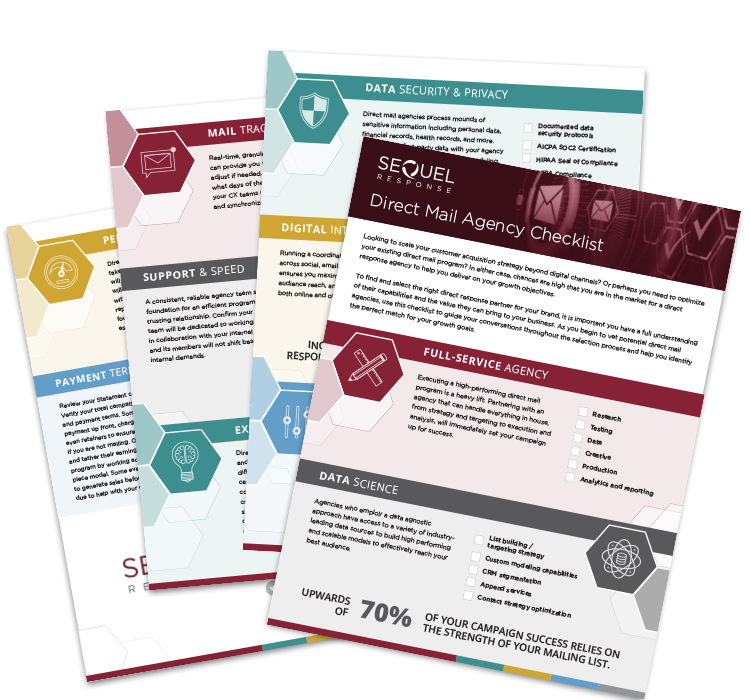Positioning Your Brand for the Recovery Phase
Although the past two months have been a bleak haze for many DTC marketers, hopeful signs of consumer resurgence are beginning to appear as the U.S. attempts to shift into coronavirus recovery territory by lifting stay-at-home orders and reopening Main Street. This type of activity sparks discussions between marketers on how to pivot, yet again, from their pandemic strategy to a recovery marketing strategy that is indicative of our new environment.
By evaluating customer and prospect behavior data during the coronavirus, direct marketers can identify lasting trends to anticipate the needs of their post-COVID audiences. Then, messaging and channel adjustments can be made to existing direct marketing strategies to position brands for future growth and customer needs.
Use today’s data to predict tomorrow’s behaviors
Past national crises have had lasting impacts on consumer habits, and the coronavirus aftermath will be no different. Over the past eight weeks, consumers adapted purchasing habits to make the quarantine situation more comfortable, and chances are high some of these temporary behaviors will find a permanent position in their daily lives. By recognizing patterns from today’s consumer data, marketers can position their brands to fill the needs of tomorrow.
During stay-at-home orders, consumers have embraced online shopping and prioritized spending on essential (i.e. grocery and health) and entertainment (i.e. streaming and video chat) products. In April, online carts began to diversify as consumers expanded their shopping to include convenience and discretionary spending. Bazaarvoice has been compiling data on global e-commerce activity, and recent results show a triple digit year-over-year order growth for industries ranging from hardware and sporting goods to furniture and home and garden. Miscellaneous services, such as education, financial and real estate, are also experiencing YOY growth. We expect DTC convenience and home good providers who established themselves as reliable and valuable during quarantine to experience permanent growth in a post-pandemic world.
Ready to explore beyond their backyards, 30% of American’s surveyed have indicated travel and vacation purchases as a priority once social distancing restrictions ease and the economy finds its balance. This is good news for an industry that took a massive hit as tourism was severely restricted to limit coronavirus spread. These vacations are likely to be local or domestic initially, but could present a new market opportunity for the industry.
COVID-19 marketing strategies have focused on responding to the situation with empathy, easing customer burden, and showing community support. Survey data shows consumers have admired this values-first approach during trying circumstances, and it will continue to be significant as the world begins to recover from the coronavirus pandemic.
Since March, Social Media Link has compiled data from 5,400 U.S. consumers. April’s survey found that over half of consumers have tried a new brand during quarantine, and 48% of those who tried a new brand plan to return to them in the future. Retaining new customers will depend on the brands’ commitment to value, quality products, availability, employee and customer safety, and giving back to the community. A GlobalWebIndex survey echoes these results, reporting 1 in 3 consumers will return to brands who helped during the outbreak.
While there are an abundance of brands experiencing hardships at this time, those who have experienced a lift in activity — or are anticipating a lift based on consumers’ post-quarantine intentions — must prepare for future growth by examining the data and reevaluating their acquisition strategy. Rather than attempt to build a new marketing strategy to satisfy previous customer expectations, consider how you can advance your pandemic approach to meet your consumers’ increased ecommerce activity and interest in mission-based or cause-related initiatives, with marketing in channels that are both impressionable and scalable.
Adapt your response strategy to make a lasting impression
While the world works to safely recover from the pandemic, there will be a significant period of time where Americans will need to continue practicing social distancing and limit out of home exposure. Therefore, brands must consider the best way to reach their audiences where they are, while being fiscally responsible with Q3 and Q4 advertising budgets.
As a tangible and memorable form of marketing collateral, direct mail is proven to have a significant impact on consumer decision making. It’s also known for favorable response rates and laser-focused targeting via look-alike modeling. By utilizing a data-driven approach, marketers can develop a targeted and meaningful post-pandemic direct marketing strategy that supports long-term growth. Use data to consider the following:
- Identify the similarities and differences between pre-COVID and COVID customer characteristics to build new prospecting models.
- Determine why offers and creative stimulated actions during the pandemic, and how they can be modified to align with post-COVID consumer expectations.
- Compare offline and online purchasing trends to determine how to leverage the strengths of both channels for a higher response.
By aligning online and offline tactics, brands can are reach consumers on the digital platforms they have embraced during quarantine while encouraging physical interaction with a personalized direct mail piece that is twice as likely to elicit a response. The marriage of these two channels allows for sensitive creative and target audiences to mirror each other, and a systematic sequence of messaging encourages engagement while ensuring limited budgets are not wasted on siloed campaigns.
Posted 5.11.2020

